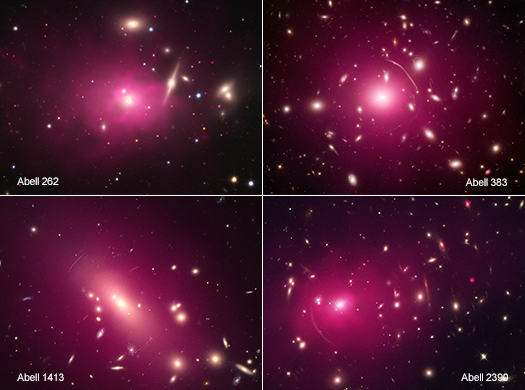
Four of the 13 galaxies clusters used in the study. The clusters are, starting at the top left and going clockwise, Abell 262, Abell 383, Abell 1413, and Abell 2390.
Astronomers have used data from NASA’s Chandra X-ray Observatory to study the properties of dark matter. The study, which involves 13 galaxy clusters, explores the possibility that dark matter may be more “fuzzy” than “cold,” perhaps even adding to the complexity surrounding this cosmic conundrum.
For several decades, astronomers have known about dark matter. Although it cannot be observed directly, dark matter does interact via gravity with normal, radiating matter (that is, anything made up of protons, neutrons, and electrons bundled into atoms)...









Recent Comments